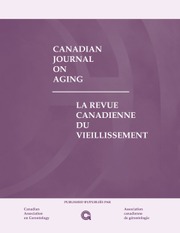Article contents
A Systematic Review of Screening Tools for Predicting the Development of Dementia
Published online by Cambridge University Press: 09 August 2012
Abstract
Early detection of dementia is essential to guide front-line health care practitioners in further clinical evaluations and treatments. There is a paucity of literature assessing the effectiveness of screening tools to predict the development of dementia, thus we conducted a systematic review to fill this gap. The purpose of the systematic review was to make recommendations to health care practitioners on which screening tool best predicts the development of dementia and is most feasible in the primary care setting. Ten databases were searched for relevant articles, yielding 751 papers. Of these, 12 met relevance criteria for inclusion. Screening tools were assessed for test accuracy, cognitive domain coverage, predictive ability, and feasibility. Four screening tools were recommended. Addenbrooke’s Cognitive Examination (ACE) was considered to be the ideal tool. A revised version of this tool is now used in clinical practice but the psychometric properties of the ACE-R remain to be established.
Résumé
La détection précoce de la démence est essentielle pour guider les praticiens en premier ligne de soins de santé concernant de nouvelles évaluations cliniques et des traitements. Il y a une pénurie de la littérature qui évalue l’efficacité des outils de dépistage pour prédire le développement de la démence; ainsi, nous avons effectué une revue systématique pour combler cette lacune. Le but de l’examen systématique était de formuler des recommandations pour les praticiens de soins de santé sur lequel outil de dépistage prévoit mieux le développement de la démence et serait la plus faisable dans le contexte de soins primaires. On a cherché dix bases de données, ce qui a donné 751 articles. Parmi eux, 12 ont satisfait les critères de pertinence pour être inclus. Les outils de dépistage ont été évalués pour la précision des tests, la couverture du domaine cognitif, la capacité prédictive, et la faisabilité. Quatre outils de dépistage ont été recommandées. L’Examen cognitive d’Addenbrooke (ECA) a été considéré comme l’outil idéal. Une version revisée de cet outil est utilisée maintenant dans la pratique clinique, mais les propriétés psychometriques de l’ECA-R restent à déterminer.
Keywords
- Type
- Articles
- Information
- Canadian Journal on Aging / La Revue canadienne du vieillissement , Volume 31 , Issue 3 , September 2012 , pp. 295 - 311
- Copyright
- Copyright © Canadian Association on Gerontology 2012
References
- 29
- Cited by




